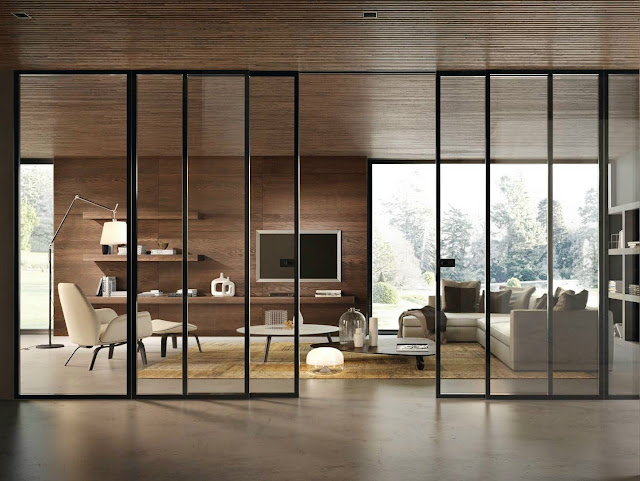Benefits of Sliding Doors for Your Residence
Sliding doors are becoming increasingly popular in commercial constructions. For decades, they've been utilised in domestic applications like patio doors, and they're now gaining momentum in new sectors owing to a number of benefits over standard swinging doors. Hotels were among the first commercial users of sliders for restroom doors, and architects and designers are increasingly incorporating them into other applications as they see the benefits.
Residential Sliding Doors Adelaide offer significant space savings. When you compare the footprint of a standard swinging door to that of a sliding door, you'll notice a significant difference. When the lost area behind the hinge jamb (where the door frame is offset from the adjacent wall) is accounted for, a standard three-foot wide door takes roughly nine square feet, despite the fact that the entire working space required isn't a perfect square. A three-foot-wide sliding door opening, on the other hand, takes up around one square foot. If you multiply this difference of eight square feet by the whole number of offices or other room types in a big area, you'll notice a significant reduction in useable floor space and a more efficient building design.
Sliding doors are available in a variety of materials and designs. A flush or stile and rail solid wood door might be used for seclusion. STC ratings for acoustic performance are included with certain full sliding door systems. If natural light is desired, doors constructed of wood, steel, or aluminium might incorporate window kits or even entire glass stile and rail doors. Even when the door is closed, combining a full glass Residential Sliding Doors Adelaide with a window wall enhances daylighting, clear views, and supports the open design idea. The different door choices offer a wide range of ornamental design possibilities without sacrificing functionality.
Another benefit of Residential Sliding Doors Brisbane is how simple they are to operate. Because of the rising popularity of sliding doors, the number of operational hardware choices for these systems has increased as well. The majority of sliding doors include a door pull that allows them to glide back and forth. This sort of sliding door allows users to open and close it with their arm or elbow if they have their hands full or want to be as hands-free/touchless as possible to avoid germs or pathogens. Deadlocks can be fitted to the pulls or full mortise locks combined with sliding door handles can be used in applications where privacy is essential. Many of them are now available as self-latching hardware to comply with construction regulations, greatly simplifying the process. Sliding doors that slam shut might be a problem, but most systems now include soft close/soft open mechanisms fitted in the track as standard or as an option.
Some Residential Sliding Doors Brisbane systems have a number of components and pieces, but the majority are offered as a kit or fully assembled. This makes ordering sliders much easier than ordering the door, frame, hardware, and accessories individually. It provides you a one-stop shop with the assurance that all of the components will work together to create the sliding door system that the designer envisioned. With all of these benefits, it's easy to see why sliding doors are becoming increasingly popular in places like workplaces, medical exam rooms, patient rooms, hotels, and meeting spaces.


Comments
Post a Comment